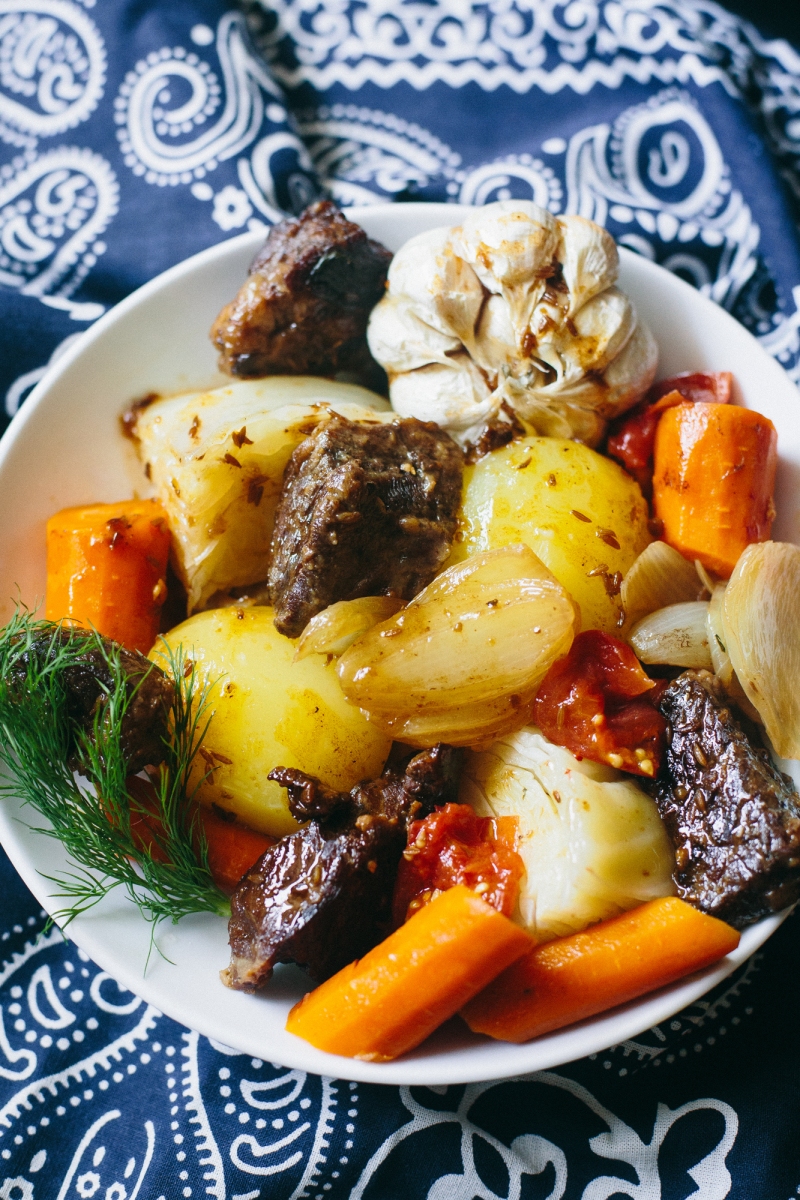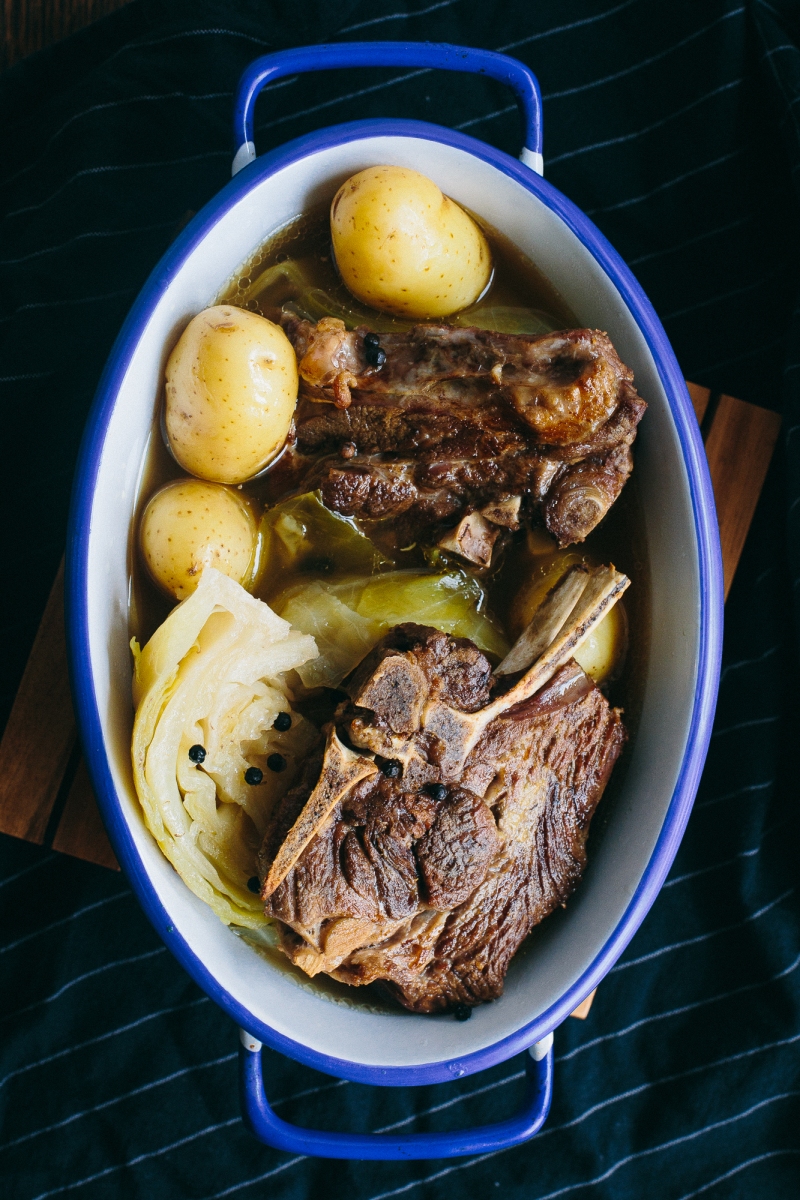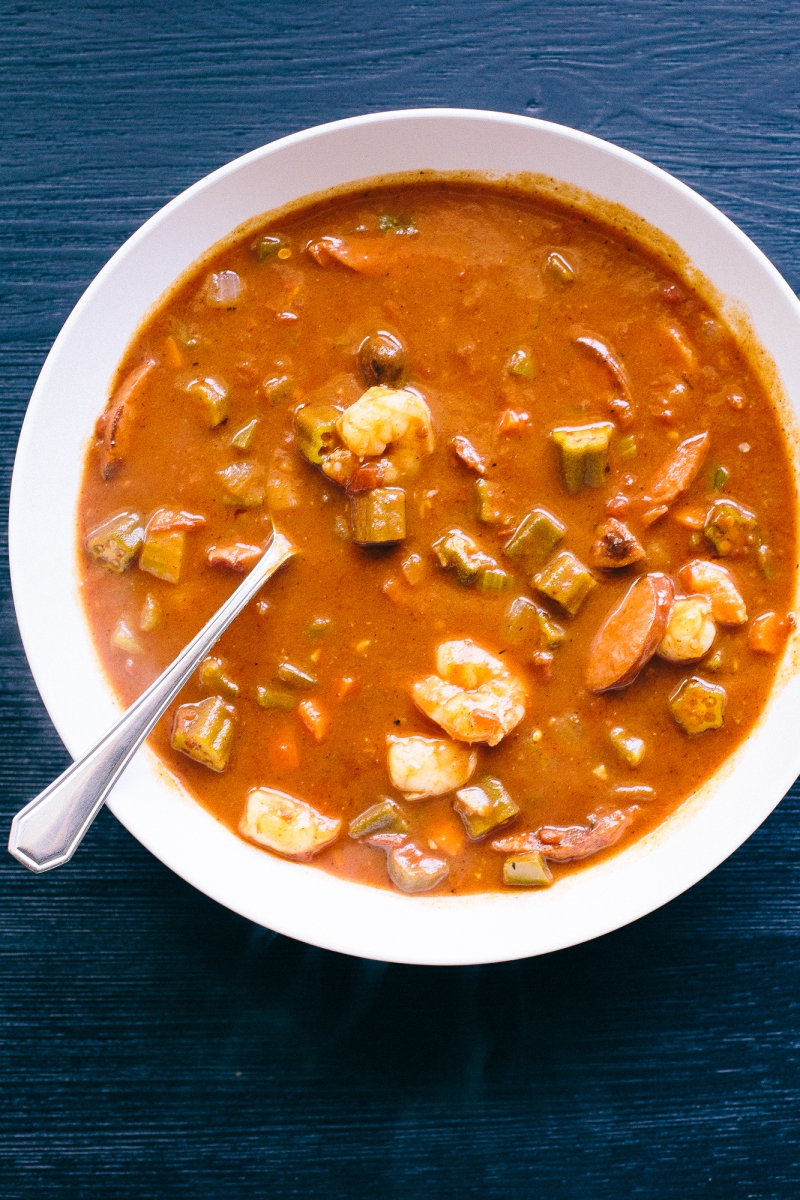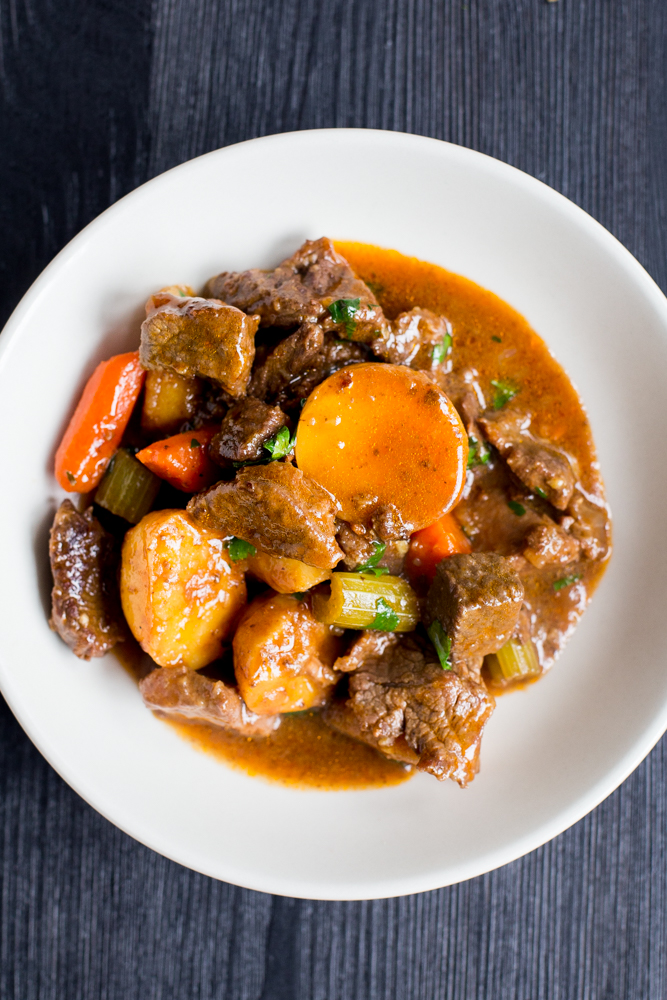
Ajiaco is a soup found in both South America and Cuba. Its name comes from the word aji (“pepper”), originally traced to the indigenous Oto-Manguean family of languages that were prevalent in present-day Mexico as far back as 7,000 years ago. Today, the aji pepper refers to a specific pepper fruit (Capsicum baccatum) popular in South America, and is also known as the “bishop’s crown” pepper throughout the Caribbean. This aji pepper serves as the flavor base for the soup, giving it a subtle intensity and unexpected bite.
Another signature element of this dish is the potato. Nearly 10,000 years old, potatoes originated in the Andean mountain regions of present-day Peru, Bolivia, and Ecuador, and it is estimated that over 4,000 native varieties of the tuber exist in these regions. This dish is traditionally prepared with a variety of potatoes, a testament to the diversity of potatoes available in South America.
This recipe is modeled after the Colombian version of Ajiaco, which always features chicken, corn, and potatoes (and the aji pepper, of course!). Like peppers and potatoes, corn is native to the Americas. The Colombian version is also spiced with guasca leaves, which are in the daisy family and native to South America. If you can’t find these dried leaves at your local international market, you can easily find them online.
The Cuban version of Ajiaco, also very popular, is a bit thicker (more akin to a stew), and features chicken, beef, and pork – what a feast. The Peruvian version is quite different from these soups, in that it isn’t served as a soup at all, but ran even thicker dish of braised potatoes and peppers (often without meat). And while all of these dishes now include ingredients that weren’t native to the Americas, such as garlic and onions, they still capture the spirit of the original (and likely forgotten) native dishes that inspired them.
And last but not least, a gentle reminder that the limited edition print version of my latest cookbook, The Heritage Cookbook, is only available for purchase through June 30th. Once they’re gone, they’re gone – they won’t be available in stores or on Amazon! These physical versions are really special to me; because I am publishing and shipping them myself, I can make the book look exactly how I envision it to be, and can sign/personalize each copy as I ship it out to you. CLICK HERE to learn more and to grab a copy for yourself!









